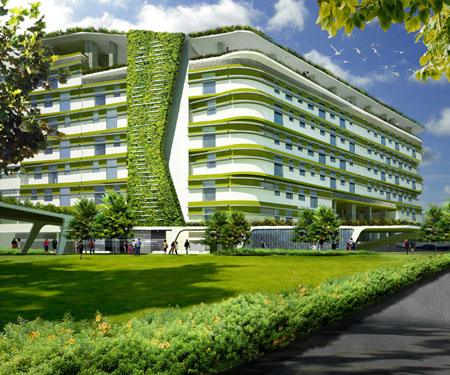Week 12 - Materials
1. Assessing Green Buildings
 "High performance green buildings are defined by the assessment systems that rate and certify them" Kibert, 2013. This actually means that the building scores points according to the design of the assessment system. The criteria for which buildings can achieve their green status is therefore highly variable and often dependent on the country in which it is situated. This is because the assessment criteria often varies on a country by country basis. Within each country, this standardises the approach to sustainable building, however this does make the assessment somewhat subjective to the assessors. For example, some countries would value some attributes to be more important than others. Another disadvantage of this system occurs due to financial and time constraints. Many assessments systems rely on energy modelling to forecast energy consumption to reduce these effects. There can be large inaccuracies in this approach which has led to the finished project having a far greater power consumption than predicted. Another disadvantage of this approach is that consistency is provided at the cost of innovation.
"High performance green buildings are defined by the assessment systems that rate and certify them" Kibert, 2013. This actually means that the building scores points according to the design of the assessment system. The criteria for which buildings can achieve their green status is therefore highly variable and often dependent on the country in which it is situated. This is because the assessment criteria often varies on a country by country basis. Within each country, this standardises the approach to sustainable building, however this does make the assessment somewhat subjective to the assessors. For example, some countries would value some attributes to be more important than others. Another disadvantage of this system occurs due to financial and time constraints. Many assessments systems rely on energy modelling to forecast energy consumption to reduce these effects. There can be large inaccuracies in this approach which has led to the finished project having a far greater power consumption than predicted. Another disadvantage of this approach is that consistency is provided at the cost of innovation.
Try the following links to find out more about green buildings, link 1 and link 2
In NZ, the green star system is used which provides one to six green stars for sustainable buildings. The Geyser building is the first new 6-green star building, based in Parnell, Auckland. The green stars have been awarded based on the following attributes:
- Using nearly a third less energy
- Using half the amount of artificial lighting and water
- Breathing 100% fresh air (compared with 25% in air conditioned offices)
- Accessing a 165 vehicle automated car-stacker (all disabled car parks)
- Using a rainwater harvesting system to store and supply water to the toilets and irrigation system
- Utilising showers, lockers and cycle parks to encourage active transport, as well as being close to major public transport hubs. (data provided by NZGBC)
However the following disadvantages have also been noted:
- The building has no heating system and so electric heaters are used during some months
- The car-stacker has been observed to deliver the wrong car on occasions which increases the energy usage.